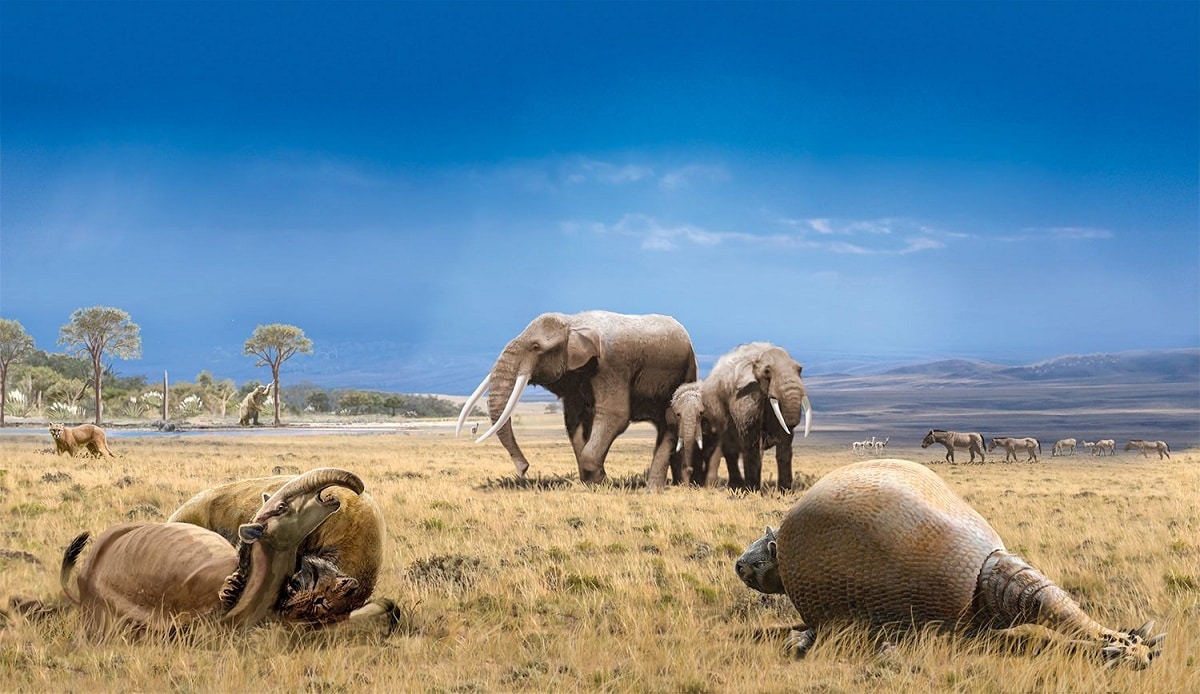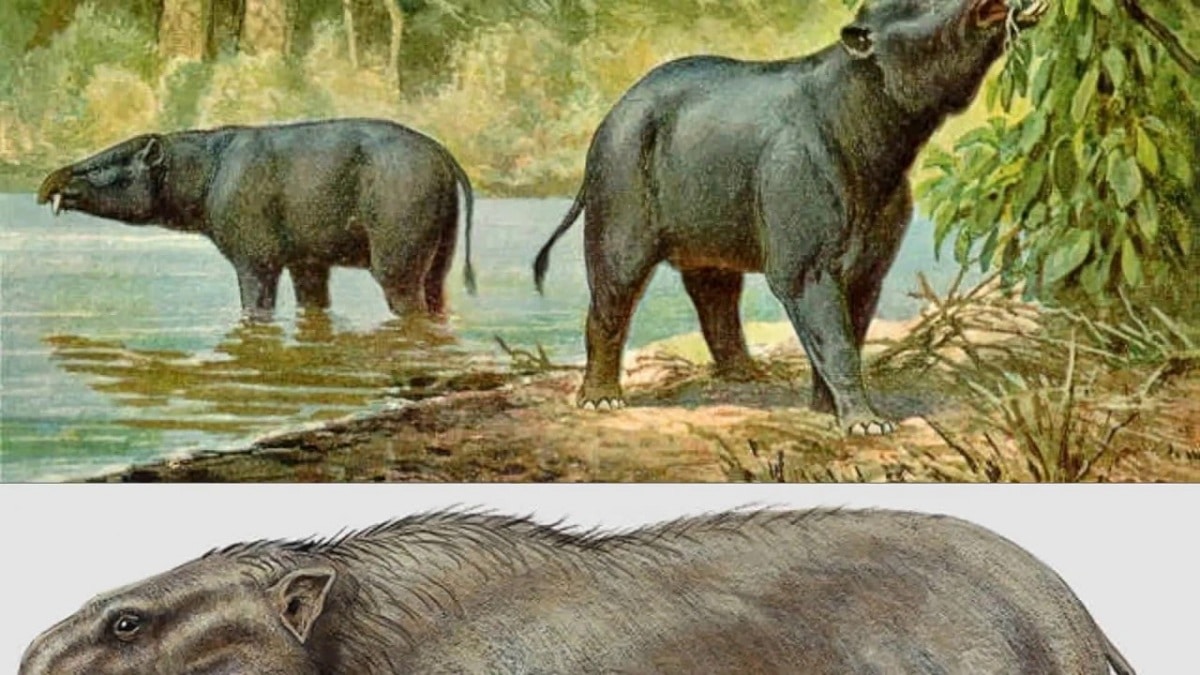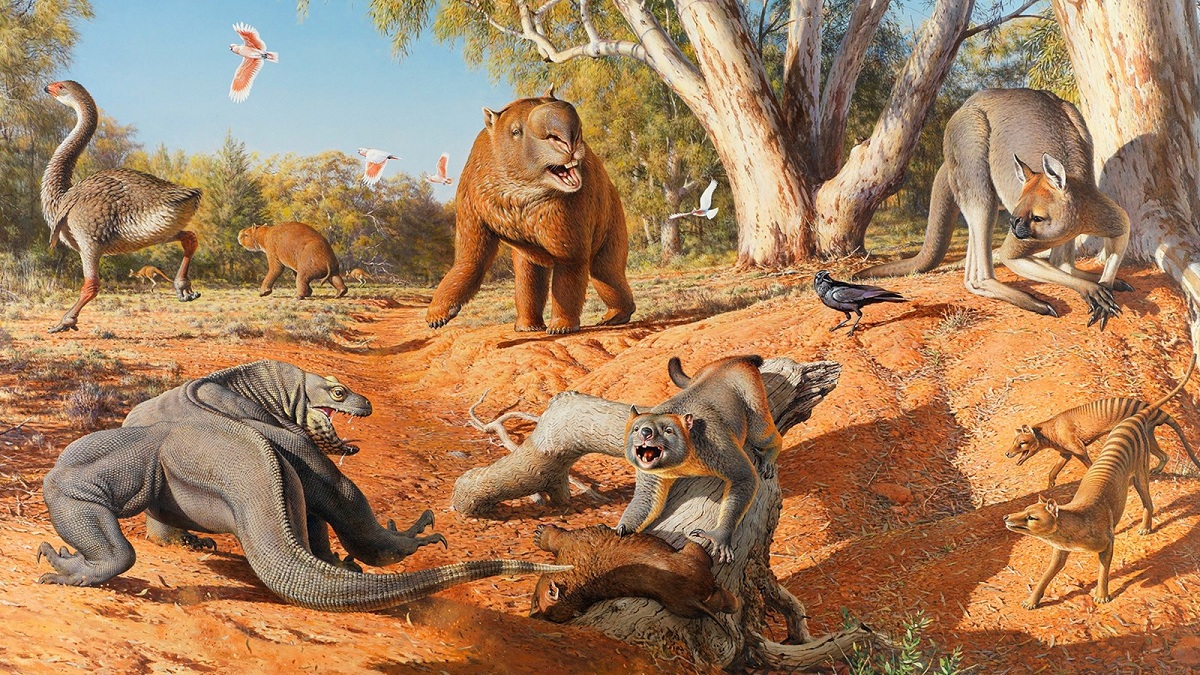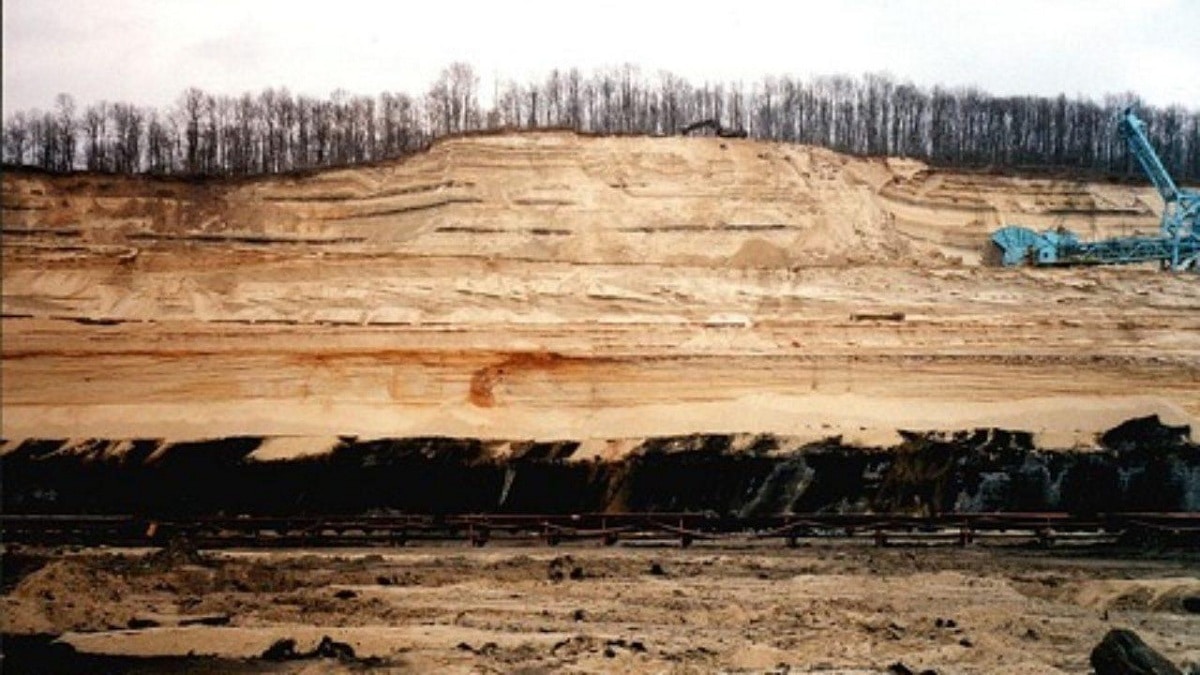
La Pliocene epoch is the last of the Neogene period full Cenozoic era. It began approximately 5.5 million years ago and ended 2.6 million years ago. This time has had great relevance in the development of the first hominids and the flora and fauna of the entire planet. The Pliocene fauna began to be located in different regions limited with the climatic conditions of that time. In many cases this location has been maintained to this day.
In this article we are going to tell you about all the characteristics, biodiversity and evolution of the Pliocene fauna.
Changes in the Pliocene epoch

This is a time when thanks to the first fossils it was possible to know that the first hominid that inhabited this planet, Australopithecus, inhabited the African continent. This time has meant great changes at the level of biodiversity, both flora and fauna. The plants began to diversify in different zones with climatic limitations. The total duration of the Pliocene is about 3 million years.
A large amount of these changes and diversification is in the area of distribution of plants and animals had their origin in deep and significant changes in the bodies of water on planet earth. And it is that the seas and oceans were modified during this time. There was a break between the communication that existed between the Atlantic Ocean and the Pacific Ocean. As a consequence of this rupture, what we know today as the Isthmus of Panama arose. The Mediterranean Sea was also refilled with water that came from the Atlantic Ocean and ended the so-called Messinian salt crisis. This crisis refers to the high concentrations of salt that existed in the Mediterranean Sea due to the closure of the Strait of Gibraltar.
As the evaporation rate of the water increased and there was less of it, the saline concentration increased to such an extent that it could not support animal and plant life. With the introduction of new water from the Atlantic, salinity levels could be lowered to a stable point.
Finally, one of the most important evolutionary events of the Pliocene epoch was the appearance of the first hominids. Australopithecus was the transcendental hominid at the origin of the human species. It was the first species of the genus Homo.
Pliocene flora and fauna

During this time the plants proliferated thanks to an increase in global temperatures. The plants that proliferated the most were grasslands. The temperatures that prevailed throughout this period of time were quite low since glaciers spread over wide areas. Although low temperatures existed widely over wide areas, there was also tropical vegetation represented by jungles and forests. However, these forested regions were limited only to the equatorial region where better climatic conditions existed.
For the rest of the areas with lower temperatures, it was the grasslands that were able to colonize the territories. Due to the climatic changes that existed at this time, large areas of arid land could appear that became deserts. Some of these great deserts are still prevalent today. In areas near the poles the flora was established and remains today. This flora are conifers. Conifers are plants that have a great capacity to withstand low temperatures and develop in more extreme environments.
The biome that spread the most during this time was the tundra. The tundra has remained like this until today since the bordering lands with the north pole are found.
Regarding the fauna of the Pliocene, we find one of the greatest milestones in relation to the development of the human being. And it is that the first hominid known as Australopithecus was developed. On the other hand, we see a great development and diversification of mammals thanks to their great evolution. Mammals were able to expand through a large number of environments and adapted to different conditions.
Although other groups of animals also undergo certain changes at the genetic and evolutionary level, it was mammals that evolved the most.
Mammals of the Pliocene fauna

Mammals began to be located in areas that remain stable today. An ancient clan of mammals whose main characteristic is to walk supported on the tips of the fingers are the ungulates. There were various species that belonged to this group of animals and they began to lose limbs and land. However, in other regions they managed to adapt and develop widely. We talk about camels and horses. The fingertips of these animals are covered by hooves.
Another group of animals that developed during this time were the proboscideans. It is a group of animals whose main characteristic is the prolongation of their faces. This extension is called the proboscis. In the Pliocene fauna there were several specimens of this group such as elephants and stegodonts. Of these two groups of animals, only elephants have survived to date.
Among mammals we also find rodents whose main characteristic is their highly developed incisor teeth. These incisor teeth are ideal for gnawing on wood or other materials and feeding on it. They are quadrupeds and vary in size. It is said they fled mainly through the areas of the European continent.
Australopithecus It was the first hominid that could move bipedally. It is about being able to walk on the two hind limbs. His size was quite small since he was only 1.30 meters tall and had a slim build. Its diet was omnivorous and it was able to thrive on the African continent, where most fossils have been found today.
Other animals
Other groups of animals also developed well during the Pliocene epoch. Reptiles had a great development, especially alligators and crocodiles. As for birds, most inhabited the American continent and were predators of a large number of animals. Another group of birds better known as the anseriformes were those that developed widely. In this group of birds we find ducks and swans, among others.
I hope that with this information you can learn more about the Pliocene fauna.